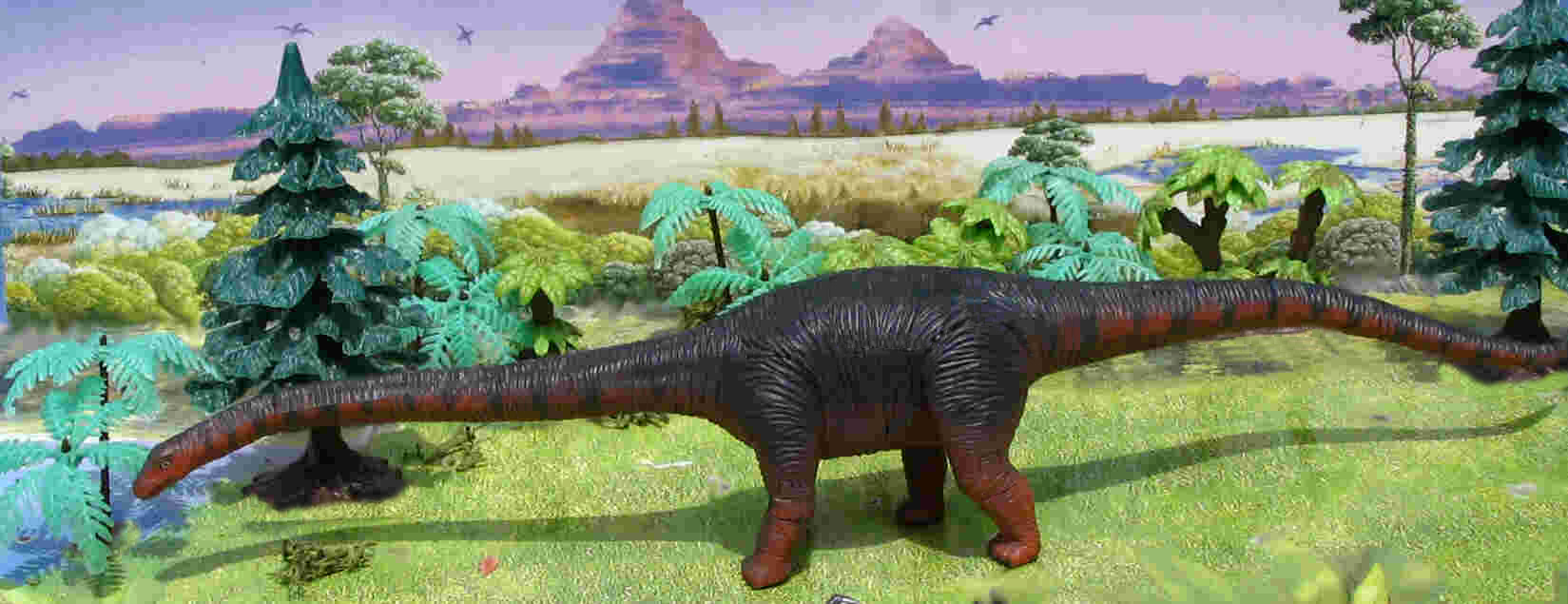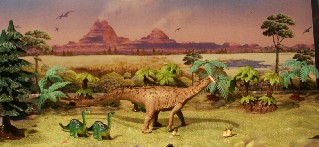LATE JURASSIC MORRISON FORMATION Seismosaurus.
updated 061812
Seismosaurus may be an especially large Diplodocus, although paleontologists have retained its amended species name to designate the dinosaur as Diplodocus hallorum.

Seismosaurus discovered in 1979, this was at one time considered the longest and perhaps the largest dinosaur, with an original (and probably vastly overestimated) length close to 50 m (163 ft), but it probably stood no higher than other diplodocids. Because of its huge size and the type of rocks in which it was found, this animal took 13 years to excavate. It may be a junior synonym of Diplodocus.
 The southern limits of the Morrison located in New Mexico were arid and the home of large diplodocids. Arid and desert ecologies often favor the development of large animals and this seems to have been the case in the southern Morrison. Today the largest elephants are found in the deserts of Namidia. A trend of many dinosaurs to reach maximum size in the last stages of the Morrison may have been related to the drying trend at the end of the Late Jurassic.
The southern limits of the Morrison located in New Mexico were arid and the home of large diplodocids. Arid and desert ecologies often favor the development of large animals and this seems to have been the case in the southern Morrison. Today the largest elephants are found in the deserts of Namidia. A trend of many dinosaurs to reach maximum size in the last stages of the Morrison may have been related to the drying trend at the end of the Late Jurassic.
